Come journey with us as we explore and highlight the people and places that make the Blue Ridge and Southern Appalachian Mountains special and unique
![]()
![]()


Located in a beautiful and easily accessible region of the Blue Ridge Mountains, and cradled atop a scenic mountain plateau sitting at 2,200 feet in elevation, Hendersonville, NC has become a place where people love to visit, parents want to raise their children, and retired folks want to enjoy their non-working days.
Much of what made the region a popular destination 200 years ago — its agriculture, distinct four-season climate, and vibrant downtown district — are still important parts of its identity today.
The vibrancy of this mountain town was threatened in the mid-1970s though, and Hendersonville faced a dilemma common to many rural American communities. Strip shopping centers were beginning to locate on the outskirts of town and the town started losing it’s lure and identity as the business hub.
In this episode we discover how a forward-thinking City Council, in an effort to preserve and protect the rich heritage of downtown, recognized that Main Street needed to be a destination experience for residents and visitors. We’ll explore the efforts that led to Historic Downtown Hendersonville being entered into the National Register for Historic Places AND, earning designation as a 2020 Accredited Main Street America™ program.
We’ll also discover how the close proximity to so many natural resources attracts adventure seekers and outdoor enthusiasts, and why Visitors to Hendersonville enjoy this vibrant town that’s an ideal spot in the Blue Ridge Mountains.
And…no discussion about Hendersonville would be complete with talking about Agritourism. Henderson County is the largest apple-producing county in North Carolina and ranks in the top 20 nationally. It is the reason thousands of people flock to this area in the fall to experience the time-honored tradition of fall apple picking.
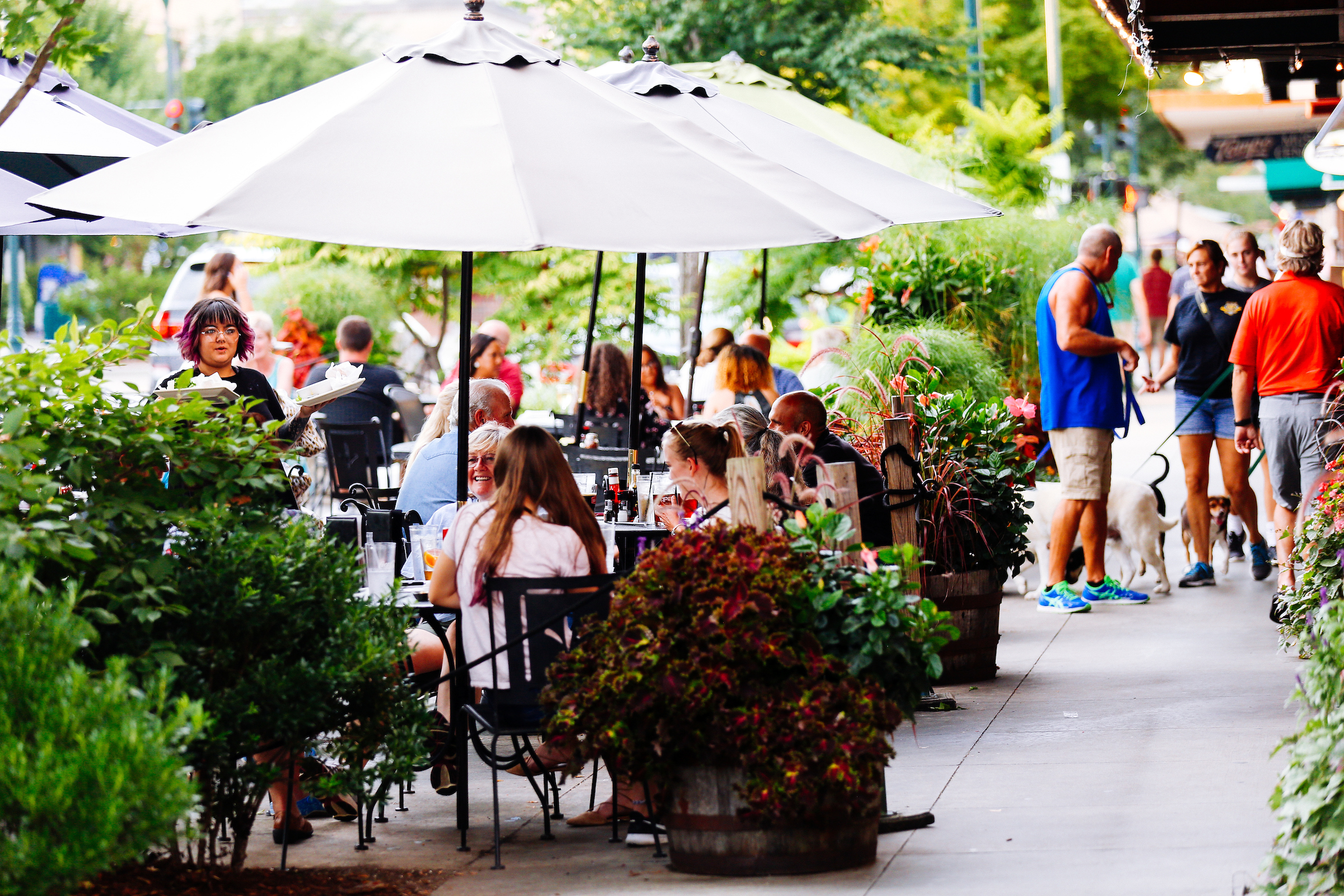
Henderson Countyʹs flourishing history can be traced back to its settlement in the eighteenth century by William Mills and his wife Eleanor who made their home in the Fruitland area, where they raised their family of seven children. Each year, Mr. Mills planted hundreds of fruit trees, and seeing them thrive, his neighbors began imitating him. Thus William Mills became the father of the countyʹs apple industry, the forerunner of the multi‐million dollar production of today.
As in many other areas of Western North Carolina, the countyʹs history has close ties to agriculture. In fact, agriculture was the primary livelihood of most of Henderson Countyʹs residents during the eighteenth century. Their major crops were corn, wheat, rye, grass, potatoes, cabbage, and, of course, the king of crops ‐apples. Another source of revenue for many settlers came from early tourism. Prior to its incorporation in the early 1800ʹs, the Hendersonville‐Flat Rock area became a popular summer resort for wealthy South Carolina planters and dwellers who wished to escape the intense heat, insects, and diseases of the Low Country.
Early on, eight townships provided leadership within Henderson County. The county’s townships were: Hendersonville, Blue Ridge, Green River, Edneyville, Mills River, Hoopers Creek, Crab Creek and Clear Creek. These townships were active and became the foundation for the county as we know it today. Prior to 1879, dusty dirt roads maintained by township residents provided the only means of transportation. Many of the roads were first built in the period between 1800 and 1840.
The Buncombe Turnpike, a 75-mile route built in the 1820s through Western North Carolina, provided easy access from the lowlands of South Carolina, and Hendersonville quickly became a vacation destination in summer months to escape the sweltering heat.
While the turnpike was used until the 1880s, the arrival of railroads in the late 1860s marked its decline. Yet for more than half a century it had served as the main route of transportation through the highlands, a true road to prosperity for Western North Carolina.
The railroad brought a degree of urbanization and industrialization to Henderson County by making it easier to travel and to ship products. Railroads became the basis for additional settlement, the provision of jobs, and the creation of stores, businesses, and industries. The railroad also brought seasonal visitors, which was the beginning of a long‐lasting travel and tourism industry, and the greatest influence on the physical development of Hendersonville in the late nineteenth and early twentieth centuries.
According to the Hendersonville Historic Preservation Commission, By the 1910s, contiguous rows of mostly two-story brick buildings characterized Main Street’s commercial core. These buildings contained an array of hardware, photographic, dry cleaning, general mercantile, furniture, clothing, jewelry, and appliance stores. Upper-story offices accommodated a host of lawyers, at least a half dozen physicians, and two dentists. Liveries occupied lots around the fringe of the business district.
Travelers from the South Carolina coast to Hendersonville, and tourists from northern Florida, Georgia, and South Carolina now streamed into the mountains, and by the end of the summer of 1914, the Southern Railway reported that some 50,000 tickets had been sold to travelers bound for Hendersonville (Barber and Bailey 1988: 59).
Hendersonville’s history provides a good backdrop for describing the county of the recent past and the present. Much of what made the Hendersonville/Flat Rock area popular in the early 1800s makes it so today. Henderson County continues to be recognized as a summer community. This reputation has expanded such that the county has become a retirement haven. However, with a diverse and strong economic base made up of manufacturing, retail sales, agriculture, tourism, and service trades, the county attracts people of all ages with interests ranging from career advancement and educational opportunities to peaceful surroundings for summer vacations.
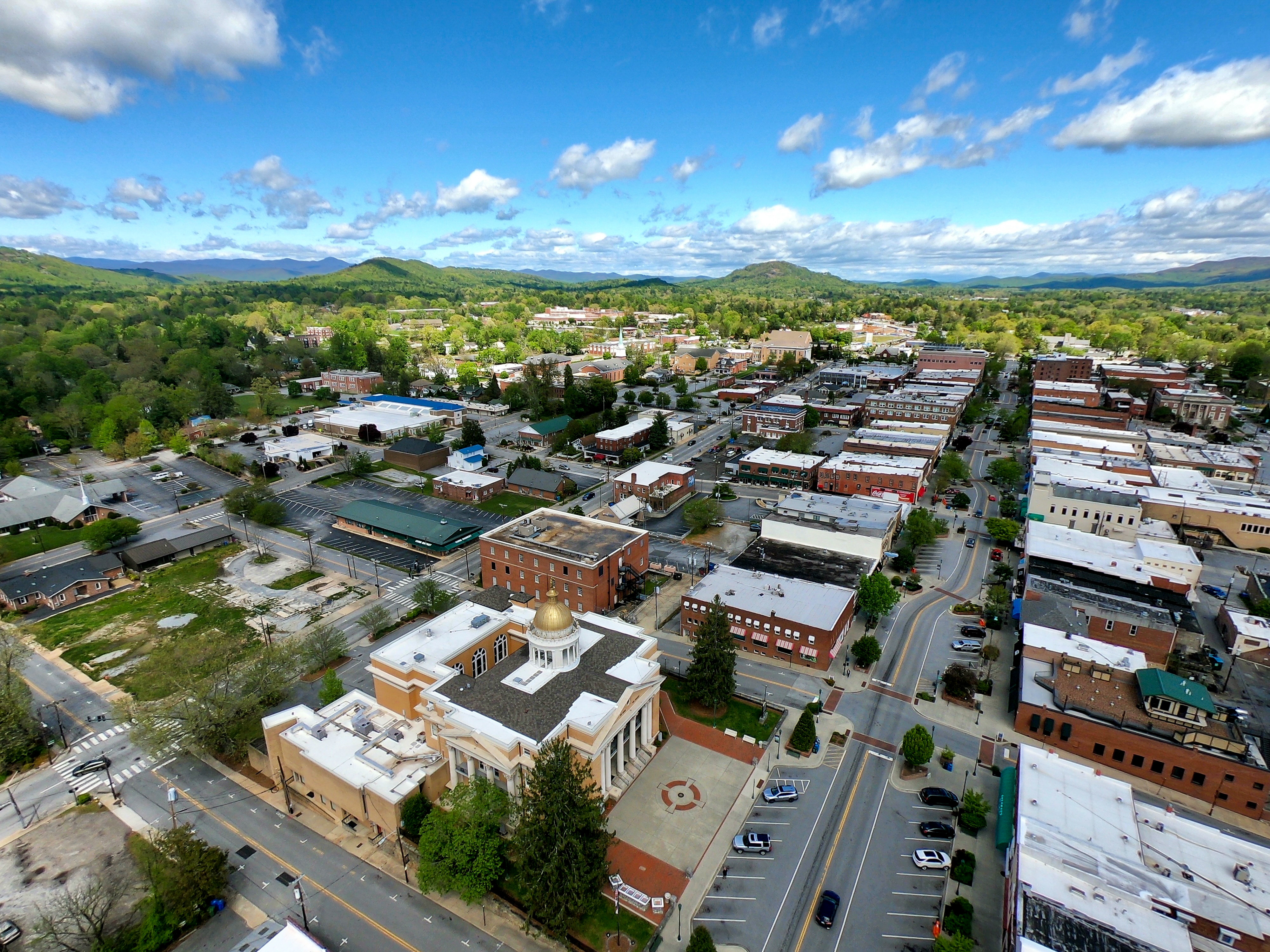
In the mid-1970s though, the mountain town of Hendersonville faced a dilemma common to many rural American communities, and it threatened the sustainability of the downtown area. Strip shopping centers were beginning to locate on the outskirts of town, and there was concern that a large regional shopping mall would lure even more shoppers away from downtown businesses. On Main Street, the traditional commercial and social center of the community, 17 businesses had closed their doors and Main Street was declining. At night, Main Street attracted teenagers who would drag race their cars down the wide and straight roadway. During the day the roar of traffic on Main Street endangered pedestrians trying to cross four lanes of traffic and parked cars.
Hearing how Grand Junction, Colorado had revived its downtown, Hendersonville City Council members, community leaders, and downtown merchants traveled to the similar sized Colorado mountain town to see what they could learn. The work that Grand Junction had completed inspired the town leaders so much that they returned to North Carolina ready to implement some of their own ideas for the rebirth of downtown.
They recognized Main Street needed to be a destination where residents and visitors would be enticed out of their cars and encouraged to stroll and shop if downtown was going to survive. These characteristics would become pivotal benchmarks in a focused effort to preserve and protect the heritage of downtown Hendersonville.
In order to provide a competitive shopping environment, the leaders determined that certain improvements and amenities needed to be provided, including slower traffic, easier pedestrian crossings, parking, and beautification.
In 1978, the first streetscape project was funded which overlaid a two-way serpentine street over the existing 4 lane highway for six blocks of the downtown mainstreet. Raised planters were installed, and sidewalks were widened. Downtown Hendersonville continued to invest in improvements with historical significance like restoring homes and structures in downtown, and in March of 1988…was officially recognized for its efforts and entered into the National Register of Historic Places.
In 2006 one more commercial block to the south was incorporated and the city also extended the serpentine street design. Community members and business owners in the original 6 block design lobbied for updates to the existing sections and between 2008-2013 all six blocks received the street scape upgrades, plus mid-blocks at intersections, extended sidewalks for more walkability, updated street signage and additional street parking. The result – one of the most unique, walkable, and inviting historic downtown destinations I’ve visited in western North Carolina.

Our family moved here in 2013, in the project’s final stages of renovation and construction. While I cannot fully appreciate the difference between the four-lane road and the two-lane serpentine streetscape, I can tell you we have benefited greatly from the vision of so many leaders who had the foresight to preserve and protect this beautiful downtown area.
In 2019 and into 2020, the Downtown Hendersonville program completed several key projects in downtown including The Grey Hosiery Mill rehabilitation project, which brought 35 new apartment units into the downtown area, the construction of public restrooms downtown and the renovation of new program offices. The 7th Avenue Depot District is currently undergoing a renaissance as well. New businesses are opening and streetscape refresh project that will improve the pedestrian and shopping experience in the district is underway.
Because of Hendersonville’s commitment to preserve and revitalize it’s downtown, Historic Downtown Hendersonville has been designated as a 2020 Accredited Main Street America™ program, which is a subsidiary of the National Trust for Historic Preservation.
Today, downtown Hendersonville is a vibrant and attractive getaway destination town. While the spring and summer naturally bring more visitors, I have been downtown in the middle of winter on a drizzly, 35-degree day, and still observed people out shopping and enjoying our beautiful town.
So what exactly is it that makes this Historic Downtown Hendersonville such an awesome town? If you live here, or you’ve spent any amount of time here then you know why. If you haven’t experienced downtown Hendersonville, lean in and I think you’ll quickly discover why.
Hendersonville is home to the State Theater of North Carolina, gorgeous waterfalls, scenic hiking, the East Coast headquarters of Sierra Nevada Brewing Co., and a popular downtown with shops, boutiques, galleries, two dozen locally owned restaurants and five craft breweries. In the last decade, Hendersonville has emerged from the shadows of nearby Asheville with possibilities as wide as its Main Street sidewalks.
At the risk of sounding cliché, downtown Hendersonville is truly like taking a step back in time. It is a place where locals come to shop, connect with neighbors and friends, share a meal on sidewalk patios, and reconnect with family. It is vibrant, real and authentic. And, it’s a place that welcomes visitors to experience for a weekend, what locals get to experience year round…a truly authentic, alive and vibrant small mountain town.
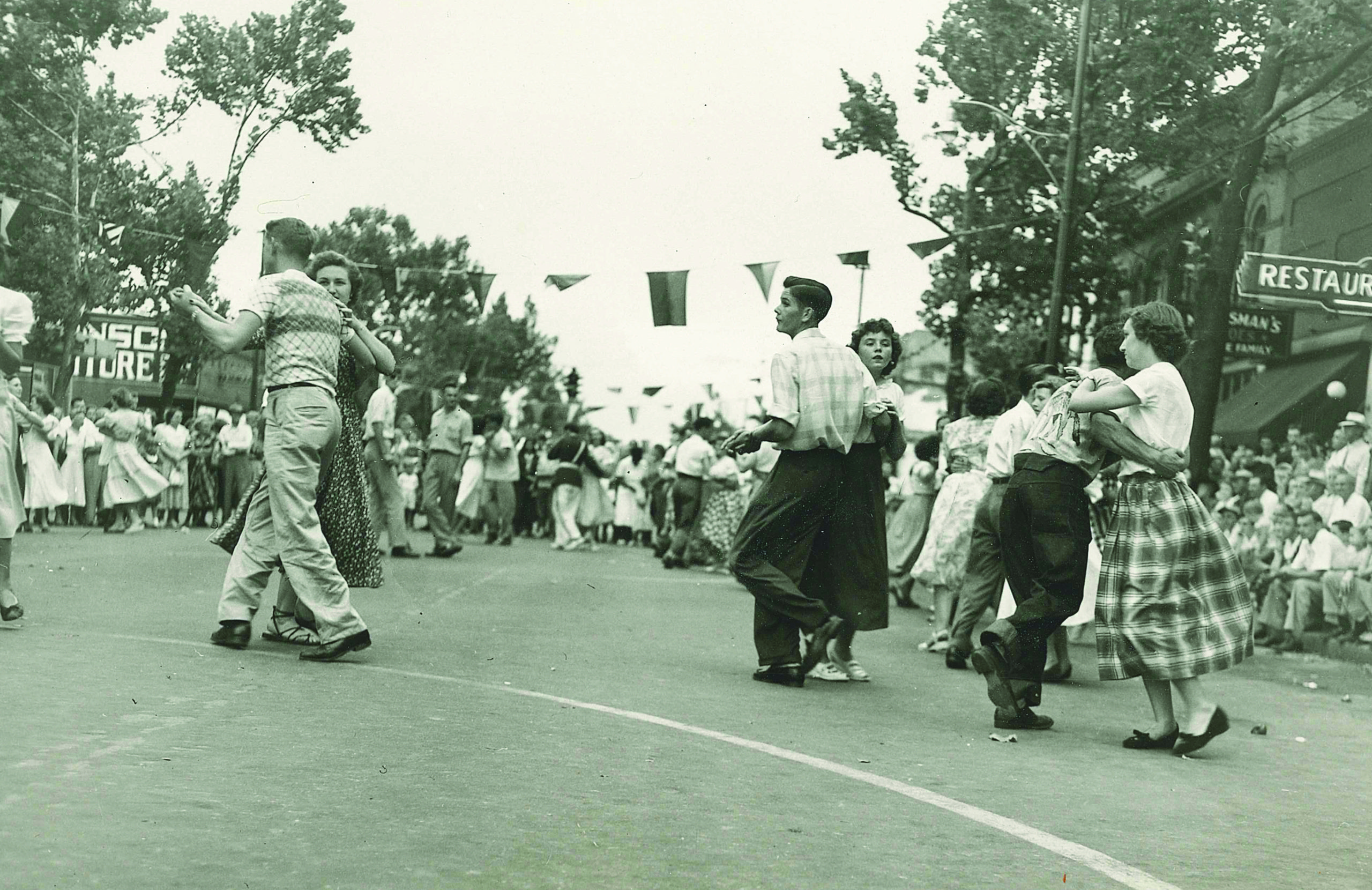
Downtown street festivals and dance parties date back to 1918 when World War soldiers were welcomed home. Today, that pastime continues with dance parties held July thru mid-August.
Music on Main has become a favorite summertime event for music lovers of all ages.
Rhythm & Brews is a series of summer street concerts featuring the hottest regional bands from a variety of genres.
Art on Main, an annual two-day festival in late September, features the incredible talents of gifted local artists. Garden Jubilee transforms Main Street into an eight- block sea of plants and gardening supplies Memorial Day weekend. More than 250 vendors line the street with shrubs, plants, flowers, trees and accessories for one of the largest gardening shows in North Carolina drawing 200,000 people annually.
Home for the Holidays celebrates the Christmas season with a full calendar of events beginning in mid-November and continues through New Year’s Day. Highlights include a holiday skating rink, wagon rides on Main Street, holiday greenery markets, historic inns tour, tree-lighting ceremony, festive lights along Main Street, a visit from Santa and merchants’ open houses.
And, one of my alltime favorites, The North Carolina Apple Festival, has celebrated Henderson County’s place as the top apple-producing county in NC for more than 70 years. This four-day festival draws 275,000 on Labor Day weekend with a street fair on Main Street, live music, arts and crafts, children’s activities, food, and lots and lots of fresh apples.
Whether you’re a Shop-Local Enthusiast, History Buff, Adventurer, or Festivalgoer, Historic Downtown Hendersonville has something for people of all ages.
Henderson County has a deep connection to the outdoors. During the height of the roaring 20’s, with increasing access by road and rail, summer camps began popping up. Today there are more than 20 summer camps still operating in the area, and people who are looking for an adventure don’t have to go very far from the heart of downtown.

Located just five miles from downtown, passing through the community of Laurel Park, is Jump Off Rock, a drive-to scenic overlook with panoramic mountain views. Situated at 3100’ in elevation, Jump Off Rock is a great place to take in the long range mountain views like Pisgah Mountain sitting over 5,700’ and Cold Mountain situated at just over 6,000’. You can throw down a blanket and enjoy the views, or hike one the three short trails for a unique view of Jump Off Rock.
Located just 11 miles out of town lies Camp Kanuga, a 1,400 acre camp that first opened in the early 1900’s as a mountain retreat where families could escape hot summers. Kanuga’s historic setting features a 30-acre lake, 20 miles of hiking trails and full-service meeting and lodging facilities. Recently Ride Kanuga opened which has 12 downhill-specific trails with a variety of skill levels. The trails are accessed by a climbing trail to the top where riders can choose from several descent options ranging from beginner to expert. Ride Kanuga has quickly become a destination all its own….and compliments the nearby crown jewel mountain bike locations like Dupont State Forest (7 miles away), Pisgah National Forest (17 miles away), and Riveter (18 miles away).
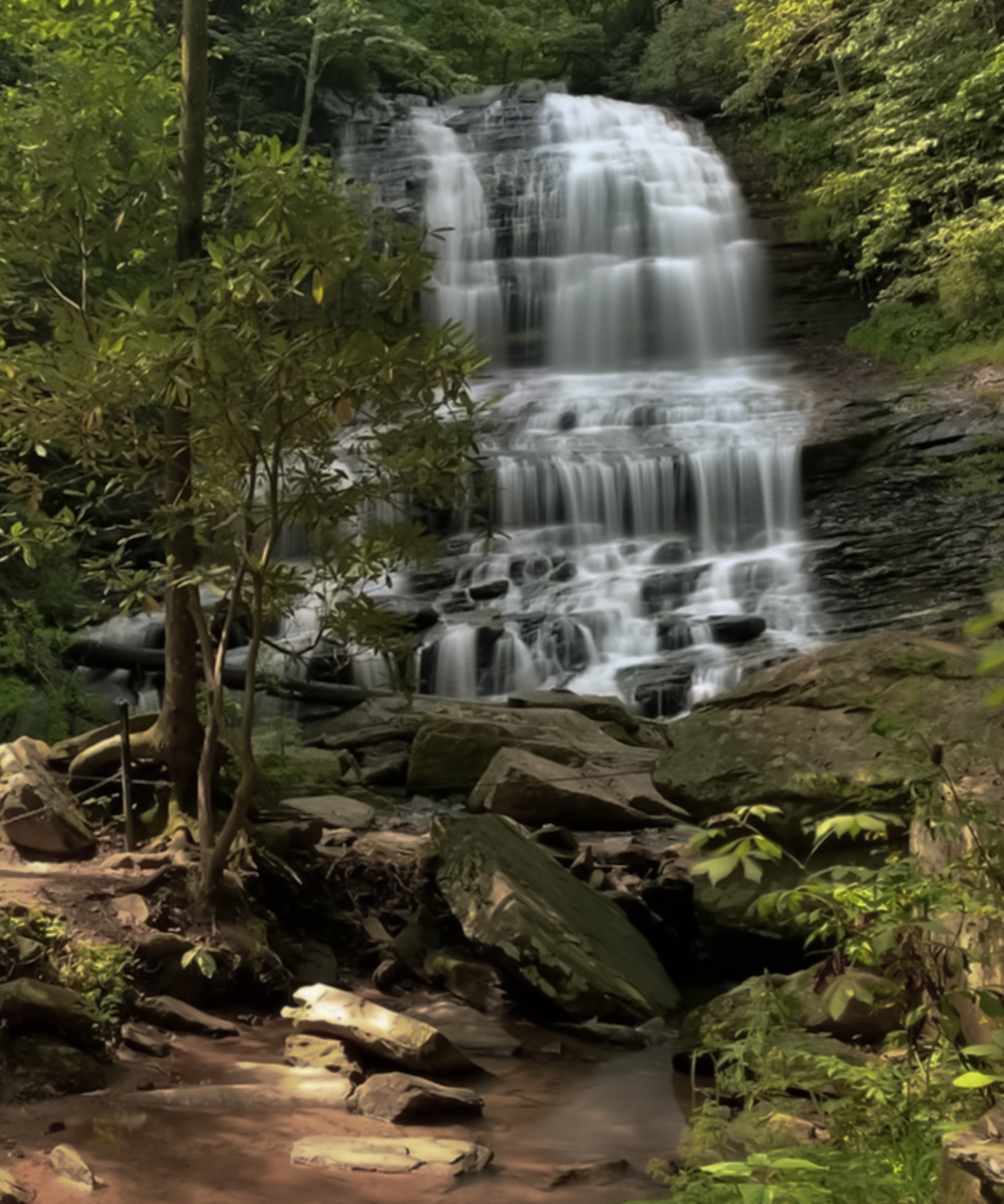
Holmes Educational State Forest is a hidden gem just 8.5 miles from downtown. The forest is home to a series of well-marked trails, including the Talking Trees Trail, as well as exhibits and displays depicting the ecology of a managed forest. Picnic sites with tables and a spacious picnic shelter are also available. It is currently open Tuesday Through Friday, but beginning March 6 it will be open on the weekends too.
Just a few miles down the road you’ll find one of my favorite locations in this area…Dupont State Recreational Forest with over 10,000 acres stretching across Henderson and Transylvania counties. It is situated in the Little River valley and is home to four absolutely breathtaking waterfalls (Triple Falls, Hooker Falls, High Falls, and Bridal Veil Falls), five lakes, and 82 miles of trails and roads. Popular motion pictures “The Hunger Games” and “The Last of the Mohicans” shot scenes at DuPont’s waterfalls.
Dupont State Forest is a mountain-bikers dream destination. It offers riders nearly 100 miles of trails ranging from easy forest roads, to exciting steep and flowy single track. While some of the trails here are pretty typical for the region, a few others provide an experience not commonly found in the southern Appalachians!
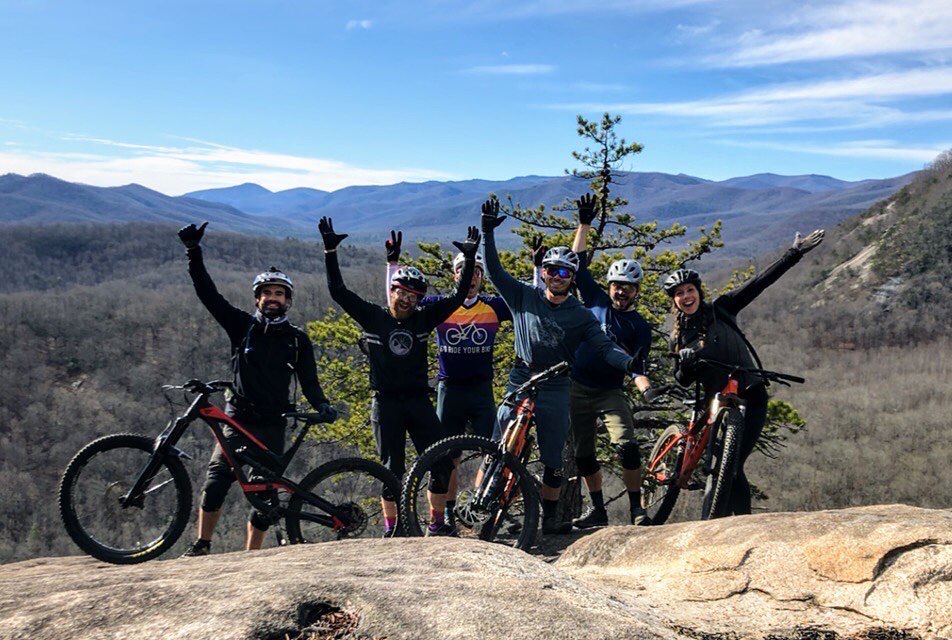
Because the trails have always been shared among all forest users (meaning hikers, mountain bikers and equestrians), You are definitely likely to meet other bikers, horses and hikers.
The best way to reach the waterfalls is definitely hiking. There are two main parking lots to reach the falls. The first parking lot you’ll come to off Staton Road as your heading towards Dupont is the access to Hooker Falls, although you can reach Triple Falls and High Falls from here as well. If you continue up the road you’ll come to another parking area on the left. From this parking area you can access High Falls coming in from the top, which I highly recommend because of the views, as well as Bridal Veil Falls. From this lot you can also access the gravel forest roads that can be used as connectors to the trails or simply use them for easy riding and hiking.
If you really want a unique lodging experience, be sure to check out Locally owned Dupont Yurts that recently opened. If you haven’t listened to the episode with Dupont Yurts I highly encourage you to check it out. We’ll have a link in the show notes too. There are THREE unbelievably beautiful and well-appointed, full-service yurts for those looking for a more glamorous way to lodge. Also check out the Dupont Kanteen at the front of the property where you can pick up ice cream, locally brewed craft beers, and ciders. Dupont Kanteen is a must stop place for our family whenever we visit Dupont.
I am going to save Pisgah National Forest for now and come back to that in a future episode, but from Dupont State Forest you’re only about 14 miles or so from the Davidson River Campground within Pisgah National Forest. And for quick reference, The Pisgah National Forest is actually divided into three Ranger Districts; Pisgah Ranger District (which includes Mt. Pisgah on the BRP, Brevard, Waynesville, and even Bent Creek – another amazing network of trails for mountain biking and hiking), The Appalachian Ranger District on the North Carolina/Tennessee border, although Mt Mitchell and Grandfather Mountain area also included in this district, and then finally the Grandfather District whose predominant area is Linville Gorge and one of my favorites the Wilson Creek Area.
Now, one thing I will mention is that if you’re interested in heading into this area I highly encourage you to check out maps from Pisgah Map Company if you’re interested in hiking or mountain biking in Pisgah Ranger District. Check them out at Pisgahmapcompany.com or see the list of outfitters and distributors on the website. The Hendersonville Visitors Center now carries these maps and you can also pick them up at Mast General on Main Street in downtown Hendersonville, Next Ventures in Brevard as well as DD Bullwinkels in Brevard as well I believe.
As we swing back to the east, just a few miles outside of downtown Hendersonville in Mills River, you’ll find the North Mills River Recreation Area. This is a secluded jewel for camping, fly fishing for Rainbow, Brook and Brown Trout, hiking, mountain biking and even tube. Each campsite is only a short stroll from the swift, cool, shallow waters of North Mills River. This area is far less populated than many other areas around, and it is actually one of my local secret spots to getaway and unplug. I’m going to come back to this area in a moment when we talk about scenic drives.
Carl Sandburg, the American poet, historian, author, and lecturer spent the final 22 years of his life at his estate in Flat Rock. Today, the Carl Sandburg Home is a National Historic Site that offers insight on Mr. Sandburg, his family, and their 264-acre working farm. Home tours are offered daily. There are numerous hiking trails and a functional goat barn, where Mrs. Sandburg raised her prize-winning goats. There are five miles of hiking trails located on the property. Each trail is easy to moderate. It takes about 35 minutes to walk to the top of Glassy where you end at a rock slab overlook. It’s actually a really nice hike.

The last area I’m going to mention is the Green River Gorge & Gamelands which is in the south east section of Henderson County. The Gamelands is a state-owned 10,000-acre section for wildlife conservation, and contains some of the most rugged areas in western North Carolina. It is also home to the one of the most premier whitewater kayaking events in the USA – The Green River Race through the Gorge Narrows which is FULL on powerful class V rapids. While this section is only recommended for expert level kayakers, you can hike into the gorge and watch this annual race. You can also hike in any other time of year as well if you’re up for the heart pumping cardio burn. It’s so hard, but SO worth it. One word of caution if you decide to hike the Gorge. Be prepared and be honest with your fitness level. This isn’t a place to take unnecessary risks. Bring plenty of fluids, snacks, first aid, flashlight, and a paper map. The Pisgah Map Company is your go to map for this area. The cartographers of these maps are not only some of the best map designers around, they’ve also been playing in these woods for years – and they know them well.
The good news is that there is literally something for everyone on the Green River. The upper section, and narrows sections are primarily for kayaking due to their remote nature, but the lower Green has some of the most exhilarating tubing you will find anywhere – swift currents, numerous rapids, and a rope swing. This is a family favorite for us, including my 74-year-old parents.
While you’re in the area – definitely check out The Gorge Zip Line Canopy Adventure. I’ll talk more about that in a future episode where we talk about Saluda, NC.
If you’re a regular listener of the podcast you know I’m big on taking the scenic route and the land around these mountains in Hendersonville is rich with scenic beauty.

The Henderson County TDA has a really nice downloadable PDF for self-guided scenic mountain drives. I have traveled them all and I think they do a great job, so I won’t go into great detail here, but I’ll link to their website in the show notes.
The truth is, you can leave out of downtown Hendersonville headed east or west on Highway 64, or south on 176 towards East Flat Rock, Saluda and Tryon and you’ll quickly be on a scenic drive. For a simple drive, Head out on Highway 64 east towards Chimney Rock and you’ll pass by several apple orchards with rolling hills and mountain vistas as a backdrop. You’ll eventually come to the intersection with Highway 74 in Bat Cave where you can take a left and travel through the western portion of the Hickory Nut Gorge, or right and travel through Chimney Rock and Lake Lure. Simply retrace your route back to Hendersonville.
Two other resources I would highly encourage you to check out are Cheers Trail Guide and the Orchard Trail Guide. These two guides will give you directions to 21 apple orchards and the 23 vineyards/breweries/cideries that make up the Cheers Trail. While these aren’t necessarily official scenic drive routes…in my opinion, to get to many of these vineyards, breweries and cideries you pass through some of the most beautiful topography in Henderson County, and you truly get a sense of the culture of this area. I’ll link these two resources produced by the Hendersonville Visitor’s Center in the show notes.
If you only have time for one scenic drive – consider heading up to Jump Off Rock. From downtown head west on Fifth Avenue. It will eventually become Laurel Park Highway and will dead end at Jump Off Rock. You’ll wind up and through beautiful Laurel Park, gaining nearly a 1,000’ in elevation, passing Echo Mountain bed before you reach the summit. Watch your speed and watch for cyclists that train in this area.
The Historic Flat Rock Scenic Byway consists of several roads in the Flat Rock community. The main road, U.S. 25, runs north and south through Flat Rock. The second road, Little River Road (S.R. 1123), proceeds west four miles from U.S. 25. The third road is Rutledge Drive (S.R. 1164), which runs west from U.S. 25 one mile to Kanuga Road (S.R. 1127). The Historic Flat Rock Scenic Byway travels through eight miles of North Carolina’s architectural, religious, and recreational history and offers a view of Glassy Mountain. On this drive you will see stately plantation homes, the St. John in the Wilderness Gothic revival church, built in 1836, and the Old Flat Rock Post Office, opened in 1839. Interestingly, the church is still active today and has a regularly attending congregation. Further on down the road you’ll see the Woodfield Inn, which has served as a popular retreat for over 150 years. Earlier we talked about the Carl Sandburg National Memorial Site, you’ll see the site on this drive too. We’ll include the (N.C. Scenic Byways, pages 39 and 40) specific directions in the show notes.
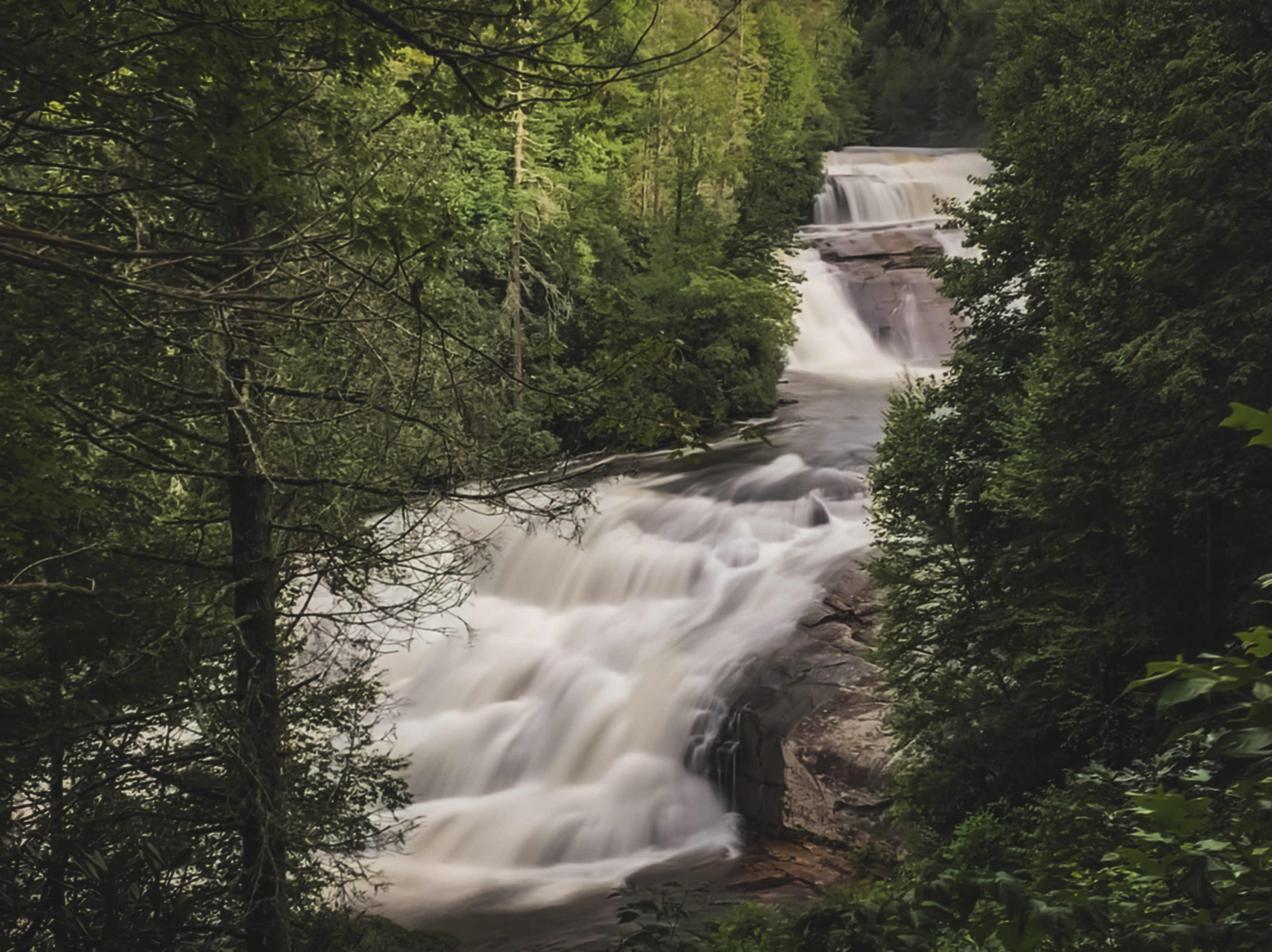
Earlier we talked about outdoor adventure opportunities in the Dupont State Forest. To get there, take Kanuga Road out of downtown. It eventually which becomes Crab Creek Road, and is approximately 12 miles to Dupont State Recreational Forest. Turn left on Dupont Road just before the Transylvania county line and follow Dupont/Staton Road for 3.1 miles. The Hooker Falls parking lot will be on the right just before the Little River Bridge. This is a really peaceful and lightly traveled route.Living here I feel like this whole area is FULL of scenic drives and I love just getting out and getting “intentionally lost” and discovering new places. If your adventurous I would highly recommend picking up a North Carolina Gazetteer since many times cellular service can be spotty or non-existent. If you’re really interested in some great gravel road scenic drives in this area feel free to send me an email at mike@explorationlocal.com and I’d be happy to share some routes with you.
There are so many places to discover and see in and around Hendersonville, and I truly believe scenic drives are a great way to experience our mountains. Whatever route you choose, I hope you enjoy all this area has to offer.
Small towns are often defined by characteristics like a slower pace of life, family-oriented events, walkability, proximity to nature, and a sense of place that’s not always evident in larger places. These are the exact attributes that drew our family here eight years ago, and why…after spending many years chasing jobs and moving around the southeast…we feel so fortunate to call Hendersonville home.
It is easy to understand why Hendersonville is also a great town to visit, and certainly isn’t short on things to do and places to see. In fact, it’s impossible to do it all in a weekend which is why this town and area continually draws people back to it every year.
The Hendersonville Visitor’s Center and the Historic Downtown Hendersonville Main Street Program do an incredible job of promoting the area. I would highly encourage you to check out the Visitor Center’s website, follow them on social media, and subscribe to their weekly podcast called Hendersonville Travelog to stay connected even when you can’t be here.
I hope you enjoyed are look into the history and modern day discovery of Hendersonville, as well as a sample of the outdoor adventures you can enjoy in this section of the Blue Ridge Mountains.
MENTIONED IN THIS EPISODE
Hendersonville Visitors Center
Ride Kanuga
Dupont State Forest
Dupont Yurts
Pisgah Map Company
Ed Holmes Educational Forest
Green River Gorge
Carl Sandburg Home
Main Street America Program
North Mills River Recreation Area
Orchard Trail Guide
Cheers Trail Guide
NC Scenic Byways
Historic Flat Rock Scenic Byway
Comments are closed.
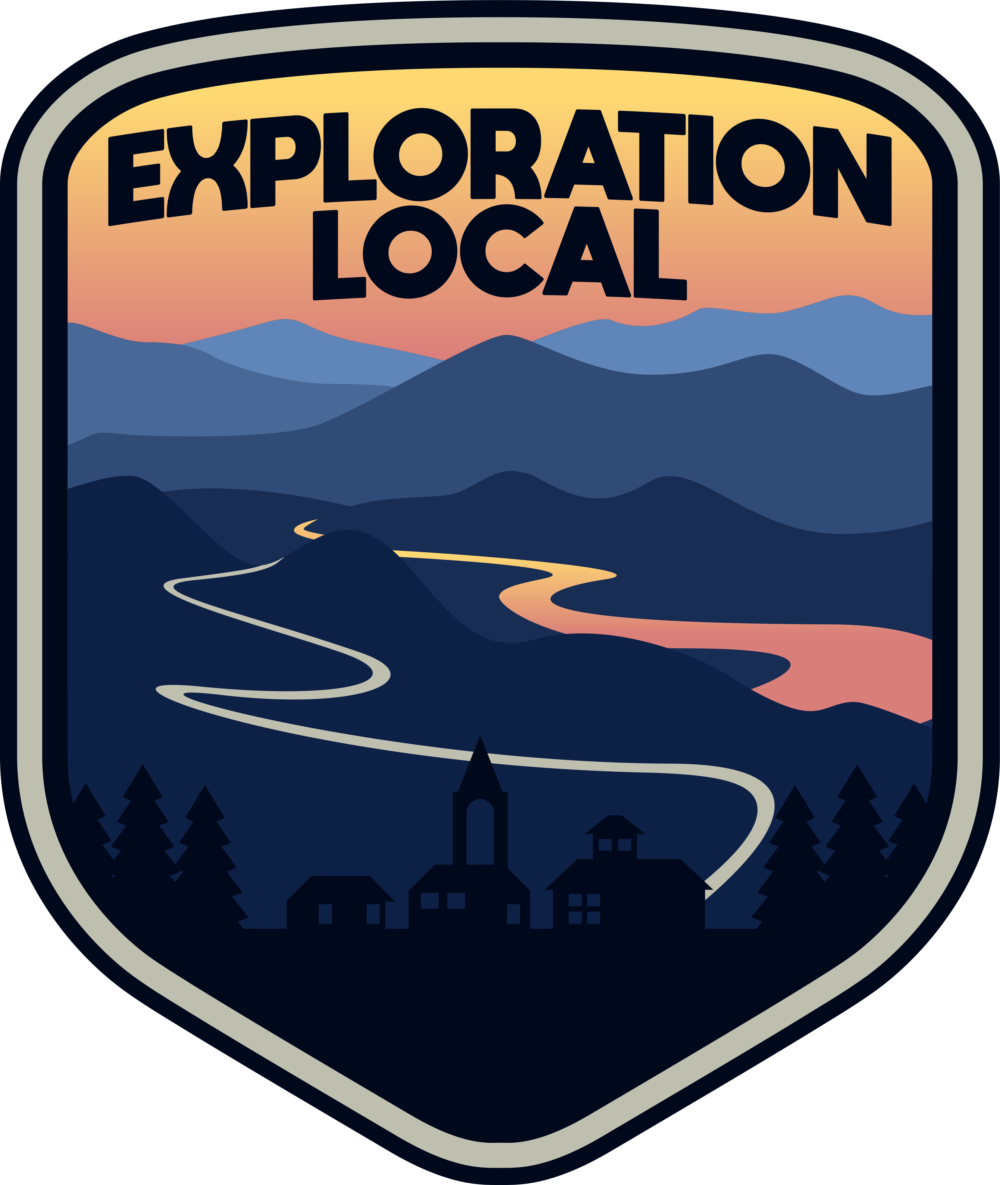
Thank you for this wonderful, entertaining, informative, and extensive story of Hendersonville, my new home town. Often, reading another perspective of a place where you live makes you appreciate it all the more. Bravo!
Welcome to Hendersonville! It is such a great place to live. Thank you for the kind words. I’m glad you enjoyed it.